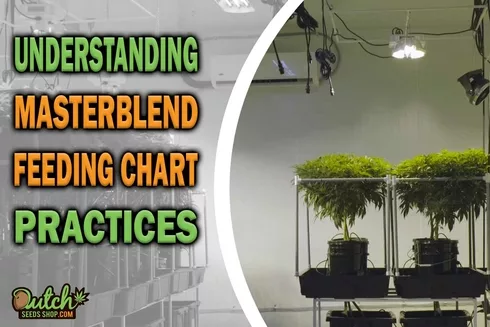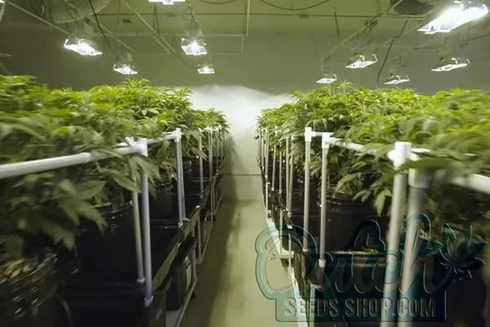Masterblend Feeding Chart
Welcome to the groovy world of hydroponics! If you’re like me, an experienced hydroponic grower, you’d know that mastering the art of plant nutrition isn’t just important; it’s crucial for successful, bountiful yields. And one critical element of that art is the Masterblend Feeding Chart. It’s like the Hogwarts acceptance letter for your plants –…

Understanding Masterblend 4-18-38

Masterblend 4-18-38, my dear friends, is the Beyoncé of hydroponic fertilizers.
It’s powerful and glamorous and knows how to make our plants groove!
This superstar boasts 4% nitrogen, 18% available phosphate (P2O5), and a whopping 38% soluble potash (K2O).
That’s the stuff of plant dreams, right there!
Mixing Ratios and Components
You might wonder, “How do I use this magical mixture?”
Masterblend is like a fancy cocktail – it needs to be mixed right.
Pair it with its loyal sidekicks, magnesium sulfate, and calcium nitrate to whip up a complete fertilizer solution.
Think of it as the Harry, Hermione, and Ron of hydroponics! 🧙♂️
Safety Precautions
Like handling any magical potion, working with Masterblend and its friends requires caution.
Always wear protective gloves and handle these nutrient superheroes with care.
Decoding the Feeding Chart
If Masterblend is the spell, the feeding chart is your spellbook.
It guides you on mixing rates (measured in grams per 10 liters of water), tells you about the nutrient profiles, and holds your hand through the entire potion-making process.
Adjusting for Different Plant Types
But remember, every plant is a unique little snowflake, and the chart adjusts accordingly.
Your leafy greens might need a different nutrient profile than your fruit-bearing plants.
So, pay attention to your plant’s love language and tweak the chart as needed.
Nitrogen Formulas and Options
The nitrogen formula you choose is like picking the right wand at Ollivanders.
Different formulas, such as 15%, 20%, 25%, and 30% nitrogen, are available.
Choose wisely, young wizard!

Tips and Best Practices
Navigating the Masterblend world is an adventure.
Here’s your treasure map:
- Mixing: Use warm water and stir until your nutrients are dissolved faster than you can say, “Expelliarmus!”
- Monitoring: Monitor your pH and EC (electrical conductivity). It’s like checking the Marauder’s Map for your plant’s nutrient needs.
- Residue: After your mixing adventure, if you notice any residue, it might be a sign of nutrient lockout. Don’t panic. Simply adjust your mixing procedure.
Adjusting for Specific Strains
Just like you wouldn’t give Hagrid’s rock cakes to Dobby, different strains of plants require specific nutrient tweaks.
The proposed favorable nitrogen levels for RDWC (Recirculating Deep Water Culture) are around 140-160 PPM in veg, 130 PPM for early bloom, 110 PPM for bloom, and 70 PPM for the finish and fade stages.
Common Challenges and Solutions
The Masterblend journey isn’t always butterbeer and quidditch games.
Sometimes, nutrient lockout and burn can happen.
But don’t worry!
With a little tweak in your dosage and mixing procedures, your plants will be back on track quickly.

Frequently Asked Questions (FAQ)
How much Masterblend formula per gallon?
Use 2.4g Masterblend, 2.4g calcium nitrate, and 1.2g magnesium sulfate per gallon. Adjust as needed.
How often do you feed Masterblend?
Feed Masterblend once or twice weekly, depending on the plant’s stage and needs.
What is the ratio for Masterblend fertilizer?
The typical ratio used is 2:2:1 (Masterblend: Calcium Nitrate: Epsom Salt), but depending on your plant’s needs and the growth stage, you may need to adjust.
What is the final NPK of Masterblend?
Masterblend 4-18-38, combined with calcium nitrate and magnesium sulfate, gives us a final nutrient grade of approximately 7.8% nitrogen, 7.2% P2O5, and 15.2% K2O.
About the Author
Share the Love:
